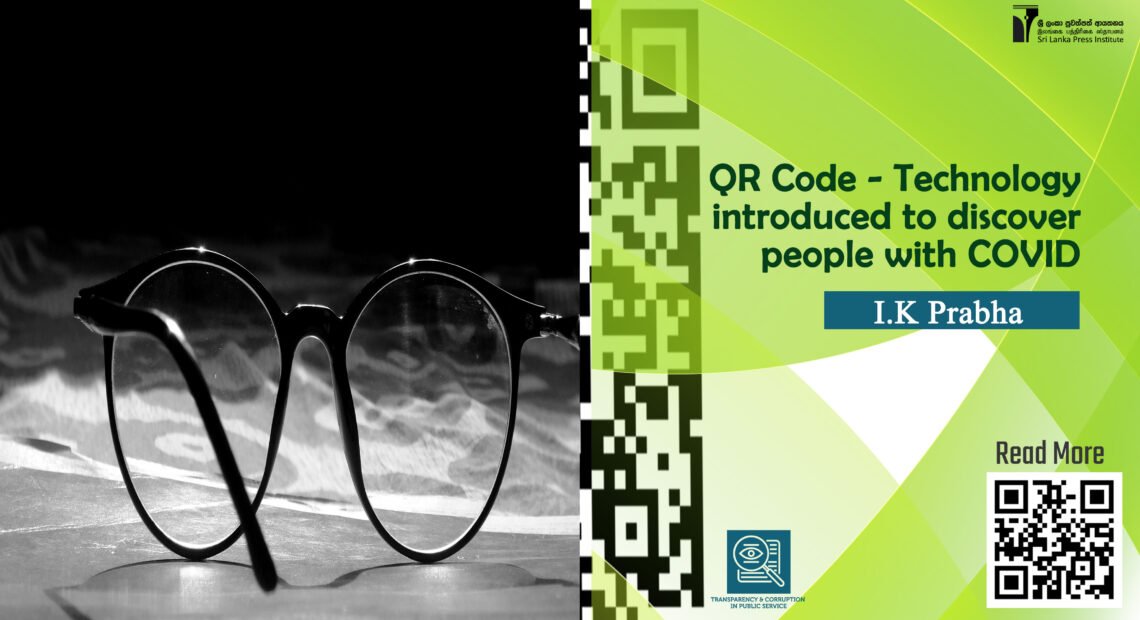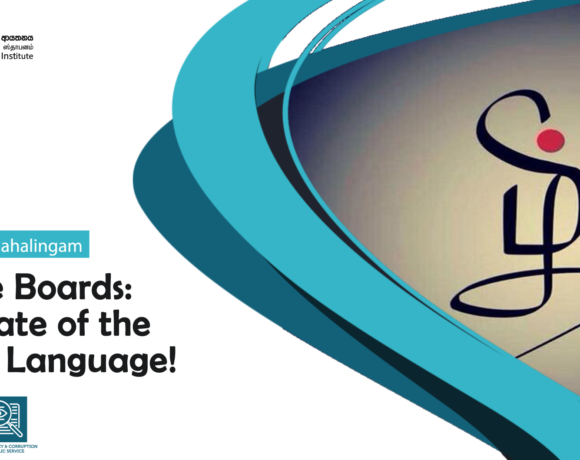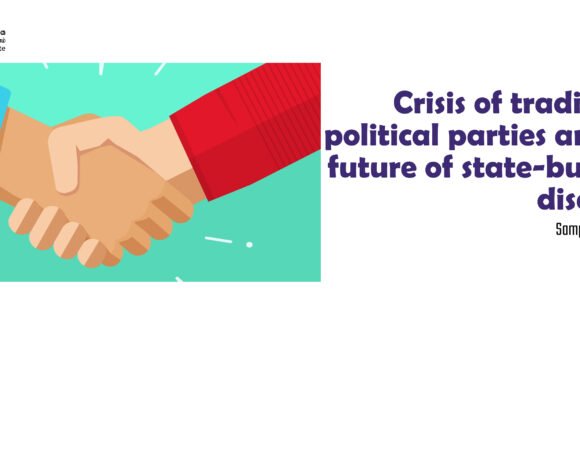
QR Code – Technology introduced to discover people with COVID
Written by – I. K. Prabha
The establishment of a Drone Regiment for the Sri Lanka Army and a system to monitor and identify those who are violating quarantine laws in isolated areas through drone technology happened on November 12th this year. The QR Code system commenced on November 9, as a new way to quickly and accurately detect the locations where Covid infected people are wandering and to store that information. It is a new approach to use technology in Sri Lanka by different social strata. The purpose of this article is to focus on the QR Code system.
The QR Code system was named the “Let’s Stay Healthy” digital project. When a person enters a place, that data is recorded in a government database via communication technology. To use this QR Code, organizations should first visit the ‘www.staysafe.gov.lk’ website and register themselves. Once this is done, the information will be sent in all three languages Sinhala, Tamil and English. The code should then be printed and displayed in a way that is visible to anyone entering the premises.
The heads of ICTA have also commented on this:
“Technology is not a magical bullet that can control Coronavirus. A Research by Christophe Fraser, a professor at the University of Oxford, found that QR Code technology, which complements social distance, hygiene, wearing masks, and many other methods, can only be used to track social connections if about 60% of the population follows its instructions correctly. Unless it could lead to the risk of closing the country”.
If the QR method identifies the number of infected people, the cost to treat those infected, the availability for the public to access the information, data of the infected persons identified, and how it will proceed are some key questions that arise here. Furthermore, small businessmen who have no basic knowledge of QR Code usage, self-employed people who leave home for work on a daily basis, people who forget their mobile phones when travelling, people who don’t use mobile phones, elderly people who have no knowledge on technological applications, rural populations and school children are also identified as communities which create limitations to the project work.
Older people and people having diabetes, asthma and heart disease are at higher risk of contracting Covid-19. People with high blood pressure, lung weakness and weakened immune systems may be more susceptible to the virus. However, children appear to have a relatively low level of exposure to Coronavirus. According to UNESCO, the virus has damaged the education of 91% of children and youth worldwide.
How the Coronavirus is transmitted from person to person has not yet been identified. Similar virus spreading happens through sputum and phlegm which are transmitted through coughing and sneezing. Also, experts say that the sputum and phlegm that comes out of an infected person
may have remained on the surface and that the virus remains active for several days. The World Health Organization (WHO) says it can take up to 14 days for Covid symptoms to appear from the time of infection. Some researchers say that it can take up to 24 days for Covid symptoms to appear. The Epidemiology Unit of the Ministry of Health says that if any symptoms appear, the person should be taken to a hospital immediately.
Organizations that introduce the QR Code method should focus primarily on how it can be made available to the public quickly and easily. It is also possible to introduce similar methods for those who do not have an accurate understanding and literacy of technology. Further, such methods should be widely publicized using the Internet and traditional media extensively. People who are not technically literate should be made aware of fingerprint and eye-scanning techniques through community police or community health officers. Furthermore, the public’s trust towards the government should be won by publishing accurate data and information reports on identified Covid infected people.
According to digital data, 67% of the world’s population use mobile phones as of 2020. Of these, 59% are Internet users, and 49% are more actively engaged with the Internet. But 49% of the Sri Lankan population uses mobile phones. Of these, 47% use the Internet, and about 30% more actively interact with the Internet. From the above data, it can be concluded that internet usage is still at a minimum level among the Sri Lankan society. In such a situation, further considerations need to be given to the measures that can be taken to make this project a maximum success.
( https://datareportal.com/reports/digital-2020-sri-lanka )
The Public Health Institute of England says that you should isolate yourself if you have been in close contact with an infected person. Doctors say that the safety methods used in cases of respiratory diseases can also be followed with regard to Coronavirus infections. The criteria provided by the WHO is as follows:
● Wash your hands often with soap if you were in public. Instead of soap, you can use other hand cleansing substitutes as well.
● A handkerchief or tissue should be used to cover the mouth and nose when coughing and sneezing. The used issue paper should be discarded after use. When coughing and sneezing, it should be done covering your mouth and nose using your elbows.
● Always stay away from respiratory patients and avoid wandering in public places. ● If respiratory symptoms occur, get medical assistance immediately.
Frequent practise of such good health habits not only protects us from the Coronavirus and many infectious diseases but also enables us to lead a healthy life. Therefore, by socializing this message, it will be possible to ensure the health and safety of all.








